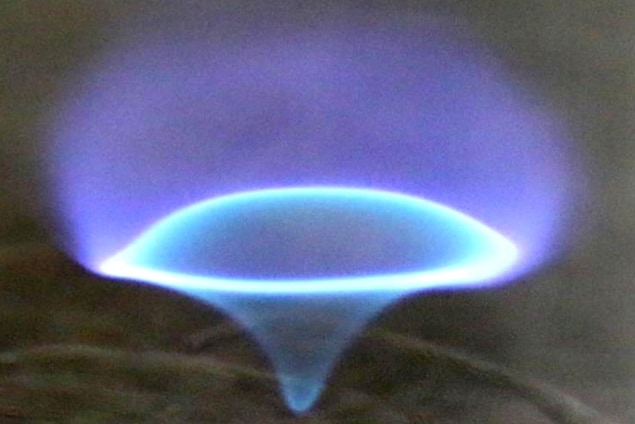
“Blue whirls” are small, spinning flames that were first spotted in 2016. Now computer simulations suggest that this soot-free mode of combustion involves three different flames. Joseph Chung, Xiao Zhang, Carolyn Kaplan and Elaine Oran at the University of Maryland came to this conclusion by accounting for the distinct rates at which different types of laminar flame release heat. Their discovery could make it far easier for researchers to stabilize and increase the size of blue whirl flames in the lab, which could lead the way to low-emission combustion.
Blue whirls were first characterized four years ago at Maryland by Oran, Michael Gollner and Huahua Xiao; who were studying the behaviours of turbulent, sooty fire whirls. They were surprised to see these inefficient sooty flames spontaneously evolve into small, stable blue whirls. They found that these elegant new laminar flames could burn through a wide range of liquid hydrocarbon fuels without producing any soot – presenting a previously unknown route towards highly fuel-efficient combustion.
Subsequent simulations and experiments have revealed the conditions in which blue whirls can form. So far, however, researchers have been unable to determine the flame’s structure and dynamics in more detail. In their study, Chung’s team explored these aspects using numerical simulations. Their calculations were based around 3D time-dependent Navier-Stokes equations, which describe the motions of viscous fluids.
Rich or lean
The researchers adjusted model parameters including the velocities and flow rates of fuel and air, until a blue whirl formed. The simulation suggested the presence of three types of laminar flame, each of which releases heat at a different rate. In diffusion flames, oxygen and fuel diffuse into each other, and the flame itself forms where they meet. Oxygen and fuel can also be premixed, creating a moving flame front driven by thermal expansion. Furthermore, these premixed flames can either be “rich” or “lean” in terms of the ratio of fuel to oxygen.
Chung and colleagues found that the purple “crown” of a blue whirl is a diffusion flame that is shaped like a large cone with an upward-facing point (see figure). This is surrounded by a premixed lean flame; while underneath, a premixed rich flame is shaped like a smaller, downward-pointing cone. A “triple flame” appears as a bright, whirling blue ring where the three flames meet, in which a significant proportion of the whirl’s combustion occurs.
The team also discovered that the transition from turbulent fire whirls to blue whirls unfolds through the process of vortex breakdown – a fluid instability that can occur in swirling flows. Through future simulations and experiments, the researchers now hope to explore how the blue whirl can be created on larger scales, and formed directly without transitioning through the dangerous turbulent whirl state. With this future work, sophisticated new techniques could soon emerge for achieving large-scale and highly fuel-efficient combustion in the lab.
The simulations are described in Science Advances.
- Below is a video made by Elaine Oran and colleagues in 2016, when they first discovered blue whirl flames.



